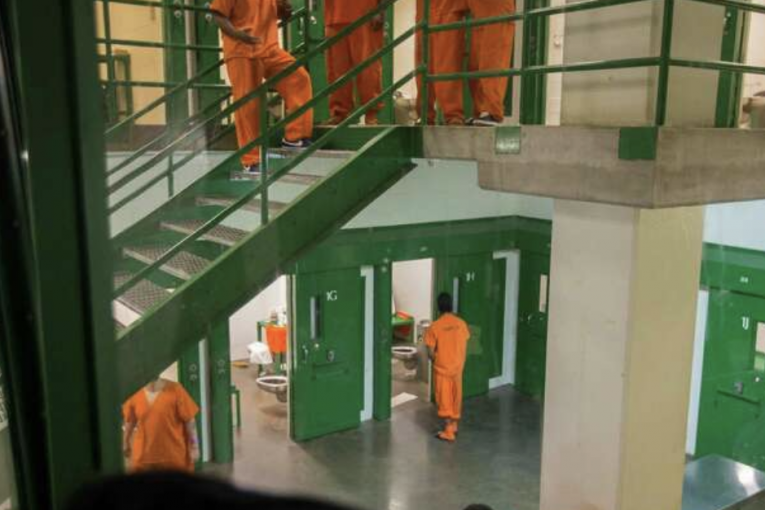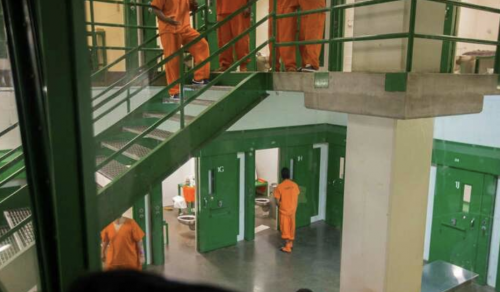
![]()

By Milo Feldman
This past week, the Harris County Jail in Houston, TX, drew the attention of the media for its exceptionally high number of detainee deaths in the past couple of years. The jail drew moderate attention back in 2021 with the death of Jaquaree Simmons and the internal investigation following his death which led to the firing of 11 jail officers, suspending of four others, and the charging of one officer with manslaughter.
On Monday, Feb. 13, 2023, Houston-based civil rights lawyer Ben Crump held a news conference to publicly denounce Harris County Jail for the recent upward trend in inmate deaths. “It is appalling that you will have 32 detainees die in the Harris County Jail in a 14-month period,” Crump said. “I mean, nobody really would really believe it unless you had these bodies that showed you it was really happening.”
32 deaths over 14 months at the hands of jail officers is inexcusable and is indicative of the larger systemic issues at hand: overcrowded, understaffed, and underfunded jails, abuse of power, and the larger cultural disregard for criminalized human lives.
In the news conference, Crump implored the Department of Justice to investigate these deaths. Two days later, the FBI released a statement that it would launch an investigation into the deaths of Jacquaree Simmons and Jacoby Pillow, who died in January 2023.
The Office of the Inspector General (OIG) releases a yearly performance report comparing data by month. There have been 28 deaths in 2022, according to Ben Crump and Paul Grinke who are representing the family members of Jacoby PIllow and Kevin Smith, Jr. Both men died in Jan. 2023, bringing the number of deaths to four in the first month and a half of 2023.
The OIG report of Harris County Jail showed 13 jail deaths in 2021, nine in 2019, 15 in 2020, and 21 in 2021—a clear upward trend with time. Concurrently, the reporting of the use of force increased from 931 in 2018, 1015 in 2019, 1093 in 2020, and 1486 in 2021.
This would be perfectly explainable if there was a proportional increase in jail population numbers. Instead, the total population is subject to extreme fluctuations during each year. 2022 shows an exponential rise in population, with over 10,000 inmates last year. The last time the jail held a comparable about of inmates was over a decade ago.
As more and more instances of police brutality are receiving media coverage, the death of inmates at the hands of jail officers, unfortunately, comes as no surprise. Inmate deaths are subject to being overlooked even more than instances of brutality by street police because of the misunderstanding people have about people in jails and prisons; people see them as a criminal class deserving of subhuman treatment.
At the Harris County Jail in Houston, TX, conditions are dismal. Cells are overcrowded and facilities are understaffed; issues more frequently experienced by local jails in recent years. Jails are locally funded, which means conditions vary greatly from county to county as opposed to federally or state-funded prisons.
In Houston, the overcrowding is largely due to the extreme backlogging of their court system, whereas Fulton County Jail faces issues with their worn infrastructure, King Country Jail had water shortages, and Virginia’s Southern Regional Jail has food contaminated with semen and urine.
The double whammy of overcrowding and understaffing raises tensions. Add to this the fact that already brutal living conditions in jails have worsened to become unsafe and often inhumane.
In Los Angeles County Jail, people sleep on the floors, tensions are high, and it smells of sewage: some toilets don’t work and mentally ill inmates, like Jhean Banos, are chained to chairs for days, and are not unchained even to use the restroom.
Simmons’ death was a matter of “reprehensible” conduct, according to Harris County Sheriff Ed Gonzalez. Simmons had two fights with detention officers on Feb. 16. 2021 and was brought to the clinic with cuts on his eyebrow and lip but reported no pain. He was found unresponsive in his cell the next day. His death was pronounced a homicide from a head injury.
The initial investigation, led by Major Thomas Diaz, found that the officers involved failed to bring Simmons back to his follow-up X-rays. The officers fired were also charged with the use of excessive force, failing to report the use of force, failing to intervene when other officers used force, and making false reports to investigators.
Over a dozen officers demonstrating gross misconduct is not a happenstance or accident or a case of the “bad apples.” This is an abuse of power and incompatible with the supposed values of policing.
Failure to bring Simmons to the clinic, failure to report excessive force, and giving false statements—this is a matter of intentional, selective ignorance that demonstrates an underlying culture of policing, that it is a breeding ground for abuses of power. We’ve all heard of the Stanford prison experiment (1971), and those were just volunteers “playing pretend.”
In actuality, “crime” is arbitrary, and the court system is biased and discriminatory, so many of the people who are in our jails are not all some “other” class of criminals, but people who did things that are illegal, or people falsely accused who receive systematically unjust punishment. Many of us have committed crimes that have not led us to jail, or have been at the hands of “selective ignorance” but in our favor.




